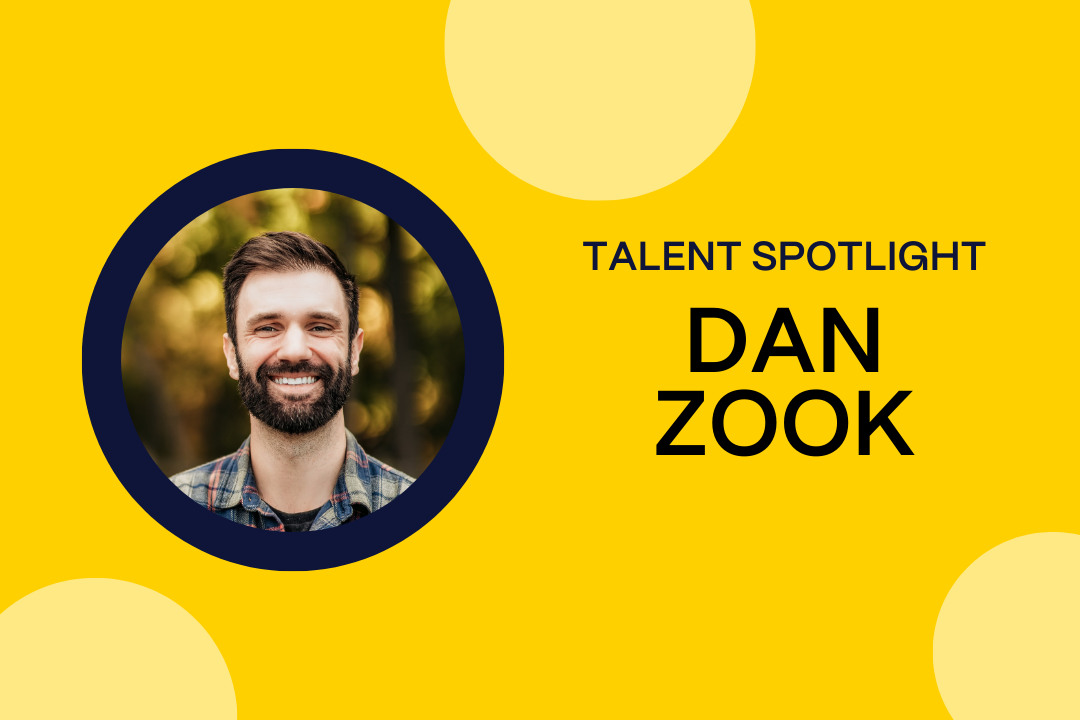A Call to Action: Creative solutions and better service in podcast advertising
Published
January 18, 2023
Updated
January 24, 2023

The podcast industry is quick to lament its understandably complicated problems. On the tech side, podcast advertisements are becoming increasingly digitized. Spots coming out of ad servers has led to everyone throwing around the word ‘programmatic’ without necessarily knowing what it means. New advents in attribution technology continue to push the limits of what we can know about listeners and how those listeners convert on advertisements, and furthermore, call into question what actions we can (and should) take based on that new knowledge. On the publisher side, conversations continue about whether or not a new podcast is discoverable, if their latest social media star turned host can transfer their social followers to podcast listeners, and how to handle the endless struggles of download projection and inventory management. And finally, on the buy side, we tirelessly compete on rates when there’s near rate parity on most properties, push for discounts without sharing performance data back to publishers, and shy away from taking a gamble on novel packaging options in a nascent media type out of an abundance of caution.
Those problems are likely solvable, but it’s going to take buy-in, cooperation, and a few phases of test-and-learn before we can resolve them. However, there is a novel, and yet age-old, problem that we, as industry professionals, all have the power to solve: We have significant room to improve in the area of service in the podcast industry. Very simply, we can all do better as we expand the industry, even when we’re up against the bristling economic headwinds that currently challenge all corners of advertising. The following recommendations are not meant to be exhaustive, but rather serve as a jolt that (re)starts the conversation on how to continue building this industry we are all so passionate about in a way that benefits all parties involved.

As a services professional, I have a lot of strong opinions (loosely held) about the right and wrong way to structurally organize a team to carry out the complicated effort of successfully running a podcast advertising campaign. There are two main levels through which we can analyze the idea of “service” in the industry: the sell side and the buy side. Both of these levels of service are two-sided platforms with each side always balancing in healthy, market-driven tension between buyers and sellers, producers and consumers.
The State of Sell-Side Service
On the sell side are, for lack of specificity, publishers. For the purposes of this article, we’ll flatten those to be one group—the people who create, manage, and distribute content. But it’s important to keep in mind that publishers can be as diverse as iHeart Media, which owns literal radio towers, content production subentities with the likes of Will Ferrell, as well as operates a massive sales organization, compared with something a bit more humble like Dear Media, which has ~50 shows but a real spirit for the industry. At the most basic level, publishers operate within a familiar two-sided platform business model. On one side, publishers create, nurture, and grow a reliable inventory ecosystem by means of acquisition, promotion, and ad operations. And on the other side of the platform, they sell to advertisers the ad space that will eventually promote brands’ products and create a financial lifeblood for both the publisher and the advertiser to repeat for as long as possible and at the maximum viable scale possible.
Looking at this relationship through the lens of service, focused on the question of “How do we super-serve our industry?,” there's more that publishers can do. The baseline of service is doing exactly what we’ve been doing for a decade now—providing rates and available dates for upcoming ad spots upon request. We’ve even moved, in recent years, to a more “rate card” based system, where many of our preferred publishers have live Google Docs that they use to show all the inventory they have available, which helps buyers and brands educate themselves in their own free time—an increasingly necessary aspect in a remote, adjustable hours world.
We’re calling for even more than just serving rates and dates up on a plate by adopting radically creative deal making and packaging as the norm. What this might look like is dependent on the publisher and what kind of assets they own and have flexibility with. A few examples could be:
- Run of network packaging with free pixel based attribution and 2x, 50/50 (mutually exclusive audiences) rotating host read spots per flight, with a reasonable frequency cap of 1x/user experience and 3x/user/month.
- Deeper integrations with marquee and non marquee talent. We all know that we can buy an A-list celebrity’s full show sponsorship for $1M+, but what about the smaller indie shows that we’d like to utilize to run a five minute, native and organic, new feature announcement and walkthrough?
- More up front and deliberate packaging with YouTube. YouTube distribution of podcasts will become disruptive as it breaks the chain of attribution (just as we were achieving mass adoption with the pixel and prefix based attribution systems in the space). This is tomorrow’s problem that we can start testing and solving today.
Another way we can do better is to create a more uniform demand-based pricing model so that we have “less planes taking off empty.” We know this year has been economically tough and we also know the realities of price integrity. Realistically, there’s not enough time in the day to create customized last-minute-avails-based buying strategies with every single publisher (we work with 300+ publishers at Right Side Up). We should work, as a consort, toward an industry best practices model that works for most publishers and can even help get smaller shows (Right Side Up works with 5,000+) a bigger share of the revenue pie by increasing their visibility to brands, which in turn helps legitimize the smaller shows to existing and new audiences.
One important thing to note: As the “growth at all costs” era approaches an end for advertisers, more and more acquisition-focused brands are asking questions like: “What about re-engagement now that I’ve acquired half the population?” and “How do I know that testing 20 more shows is actually getting me in front of an incremental audience?” Diversifying the pool of advertiser-ready podcasts with presumably incremental audiences can help us continue to scale the industry even while economic factors and advertiser goals shift.
Overall, we’re looking for publishers to be creative in what they pitch to us and proactive about going above and beyond the traditional buying structures. A logo on album art is, while perhaps valuable to certain brands, not innovative or disruptive. A :15 pre-roll on every single episode in a season is, again, while valuable to some, not groundbreaking nor going to meaningfully change performance outcomes.
Building Better Buy-Side Service
Publishers aren’t the only players in the industry that need to step their game up to improve podcast advertising service. There’s plenty of room to grow for buy-side service providers, too. Buy side providers include agencies, consulting marketplaces like Right Side Up, and in-house buyers actively participating in the industry at scale. The following suggestions are mostly driven by the “if you never ask, you’ll never receive” philosophy, and are all intended to diversify both brand spend and investment in publisher/network show portfolios. Essentially, the more shows you can run successfully, the more stable and overall healthier both the advertiser’s business and the network’s business becomes.
These recommendations are broad enough to apply to competitively differentiated business models. In-house buyers placing $30M in inventory for one brand will inevitably have different needs than the independent consultant working on two modestly investing brands, which will be different still than the agency serving 20+ clients and maybe still not cumulatively approaching the aforementioned $30M investment scale.

First, and most importantly, it’s on all of us as buy side market participants to encourage transparent relationships around performance data. As a publisher, it must be terrifying to price shows for performance advertisers without quantifiable knowledge of what’s worked in the past, outside of renewal rates which can be a muddy performance indicator. With the upcoming ease of reporting that is soon to be provided by pixel and prefix-based attribution, we should be able to proactively report on performance while still blinding for brand specific confidentiality requirements (e.g. CPA target). Proactive transparency through routine reporting should ultimately create more actionable optimization and therefore, better business outcomes for podcast advertisers.
Next, we need to be more thoughtful, as an industry, about our terms and conditions. This is an ongoing effort, as we need to consistently react and try to pre-empt changes in buying norms, technical specifications, and novel forms of (intentional or unintentional) misalignment between what’s ordered and what’s delivered. A simple example of this came about this year, when we legislated (and I don’t use that word lightly) for a frequency cap in the per user experience timeframe from our major DAI partners. Put simply, we made sure that someone downloading an episode that is served from a DAI ad server isn’t getting hit by the identical advertisement in the same episode. These are common sense technical changes that we need to remain vigilant about and even potentially socialize with each other about to reach alignment.
The last recommendation ties back to asking publishers to be proactive and creative. While we ask publishers to get outside the box, we too can start the ideation process and suggest novel solutions that still have performance potential (even through a direct response lens) into the conversation. It’s also imperative that, during this process, we’re realistic and communicate honestly and transparently to both publishers and brands:
- What advertisers really need to be incentivized by to get initial buy-in
- What advertisers need to feel secure/protected if they’re participating in a riskier asset (i.e. there are fallbacks in place in case things go worst-case-scenario from a performance perspective)
There is no playbook for creative deal making, for the simple reason that we’re trying to put together deals that haven’t been done before in a continually evolving ecosystem. Therefore, it’s on buy side agents to be similarly proactive, creative, and (we buyers get a third one) overly communicative about the hard boundaries of our brands, and what (sometimes unorthodox) ideas we have to insulate brands from any potential risk that comes from experimental media. Don’t forget to get it in writing, too.
There was a time where paying for and placing a Mailchimp ad on a serialized true crime episode would have been seen as extremely experimental, but industry trailblazers led the way with a buy that was executable, had room for upside, and (my assumption) didn’t put any side of the transaction at an excess of investment risk.
These problems and their suggested solutions should get us even more excited about the podcast industry. More now than ever, we have the power to create a better landscape for advertisers and publishers, and these recommendations should be used to drive an idea, spark a conversation, or get a .csv of pixel or prefix-based reporting sent back to a publisher for optimization purposes.
Brands getting exceptional client service will provide our industry with exponential growth, especially when coupled with the exciting developments in podcast tech and content, and the ever-expanding flow of brands’ innovative offerings of products and services that undoubtedly appeal to podcast listeners.
.webp)
.webp)
.webp)
.webp)
.webp)
.webp)
.svg)
.svg)
.svg)
.png)


.png)







.png)

.webp)
.webp)
.webp)
.webp)
.webp)
.webp)